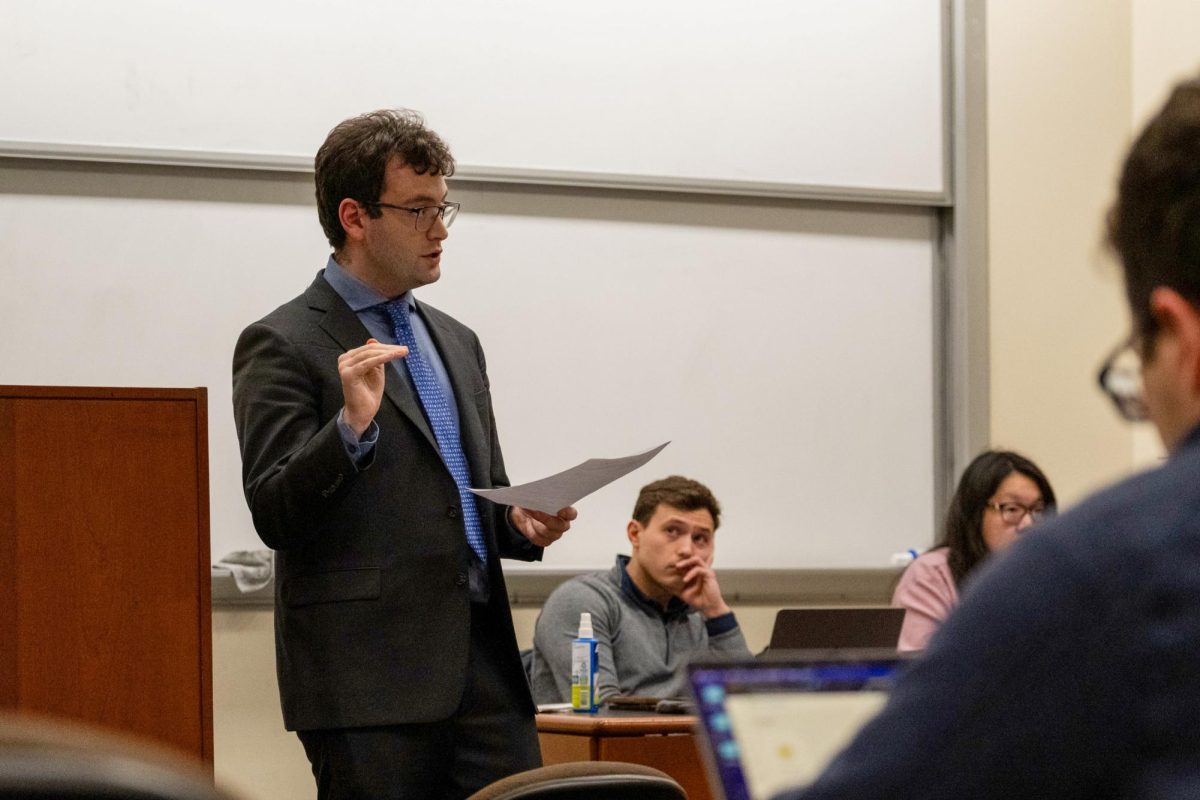
When administrators looked last year at what was going on in the admissions office over the past decade, they found a misrepresented financial aid policy and a misreported rankings statistic.
The revelations became some of the University’s darkest bruises, leading to an unranking from the U.S. News & World Report and a blizzard of bad press.
With a new enrollment manager and a commitment to transparency, the admissions office opened its doors again – this time, to the Washington Post.
The Post published a 2,400-word story Saturday after higher education reporter Nick Anderson got access to the admissions office at the height of application reading season. The admissions process – one of the most high-pressure experiences for centuries-old colleges and 17-year-old college applicants alike – became a little clearer as a result.
“It showed how the quest for students with brains, guts and desire shapes both the destiny of the applicants and the selective, private university that hungers to raise its national profile,” Anderson writes.
Here are some of the highlights from the story:
1. There’s no silver bullet for admission, but talking about GW helps
The successful applications withstand probing of every line item, from high grade-point averages to that unfortunate 10th-grade C in chemistry. They also show evidence of a student who actually wants to enroll. But sometimes, what appear to be strengths also can be seen as weaknesses. Here is the back-and-forth:
Look at that gaudy GPA, 4-point-something. But how is it “weighted”?
Check out all those Advanced Placement courses. How many did the student avoid?
That’s a pretty decent SAT score. What was the math subscore?
This essay endears him to me. I’m biased because I think he’s charming.
I think he really could handle the work. He also brings some diversity. What’s giving me pause is that weak ‘Why GW’ essay.
She scrutinized a supplementary essay on what excited the student about GW. She noted a campus visit. She called the student’s interest solid and specific. Sometimes, she said, applicants write mostly about Washington, D.C., rather than the university. Or they just write about themselves. Not helpful.
2. The power of application readers
Each officer goes through about 30 files a day, 40 if they’re on a roll. Everything is done electronically. Paper was ditched in 2005.
The first read is crucial. GW officers are empowered to admit or deny if the case is clear-cut.
In: The standout student, a mover and a shaker, aces the most demanding curriculum offered, sets the tone for classroom interaction, understands GW.
Out: The so-so student, with few tough classes, an undistinctive personal story and a thin sense of the university.
3. If other people from your high school apply, your application is read next to theirs
GW’s standard practice is to read all the applications from a given school consecutively. That means classmates get compared. Contrary to popular belief, she said, there are no admission quotas per school.
Britt Freitag, 27, senior assistant director of admissions at George Washington University, sits at her desk, where she reads applications. Freitag and several other “readers” are reviewing about 19,000 applications.
“A huge misconception,” Freitag called the quota theory. “We read in school groups because then you get more consistency. It’s actually more fair.” Knowing as much as possible about a student’s school and classmates provides essential context, Freitag and other GW officers said.
4. If applicants fail a high school class, they are not necessarily rejected
[Freitag] dove into the transcript and started counting. First the number of “core” classes per year a student took in English, math, science, social studies and foreign languages. Not core: classes such as band, physical education and drama. Then the number of AP, honors and International Baccalaureate courses. Then the number of A’s and B’s in core classes.
“Uh-oh,” she said. “Got a D.” Freitag made a note.
Every C, D or F in a core class gets discussed in the admissions review. (An F is not a disqualifier. One applicant with an F in math who later made a big comeback was admitted.)
5. How gender and financial need get discussed
Gender came up. About 55 percent of GW undergraduates are female. Several times, officers pointed out that a candidate was male. Rarely did that happen with female applicants. “We have fewer males in the pool,” Felton said afterward. That doesn’t mean men get an edge, she said. “But I notice it when it’s being presented.”
Officers noted which students were children of lawyers and which had parents who were a cook and a housekeeper. But there was no discussion of financial need. Before making final decisions, GW planned to run a total need analysis for the class Felton wants to admit. The goal is to ensure there is enough money to help needy students attend a university where tuition, fees and room and board top $58,000 a year. At that point, some tentative decisions might be reversed to boost the financial-aid budget. That could help a few borderline students from affluent families.
6. A lot of Class of 2018 applicants look up to Edward Snowden
GW also asks students to list a role model and two words to describe themselves. As for herself, Freitag said, she would list “Martha Stewart/Tina Fey” and “sassy/classy.” This year, she’s seeing a lot of Edward Snowden citations.




